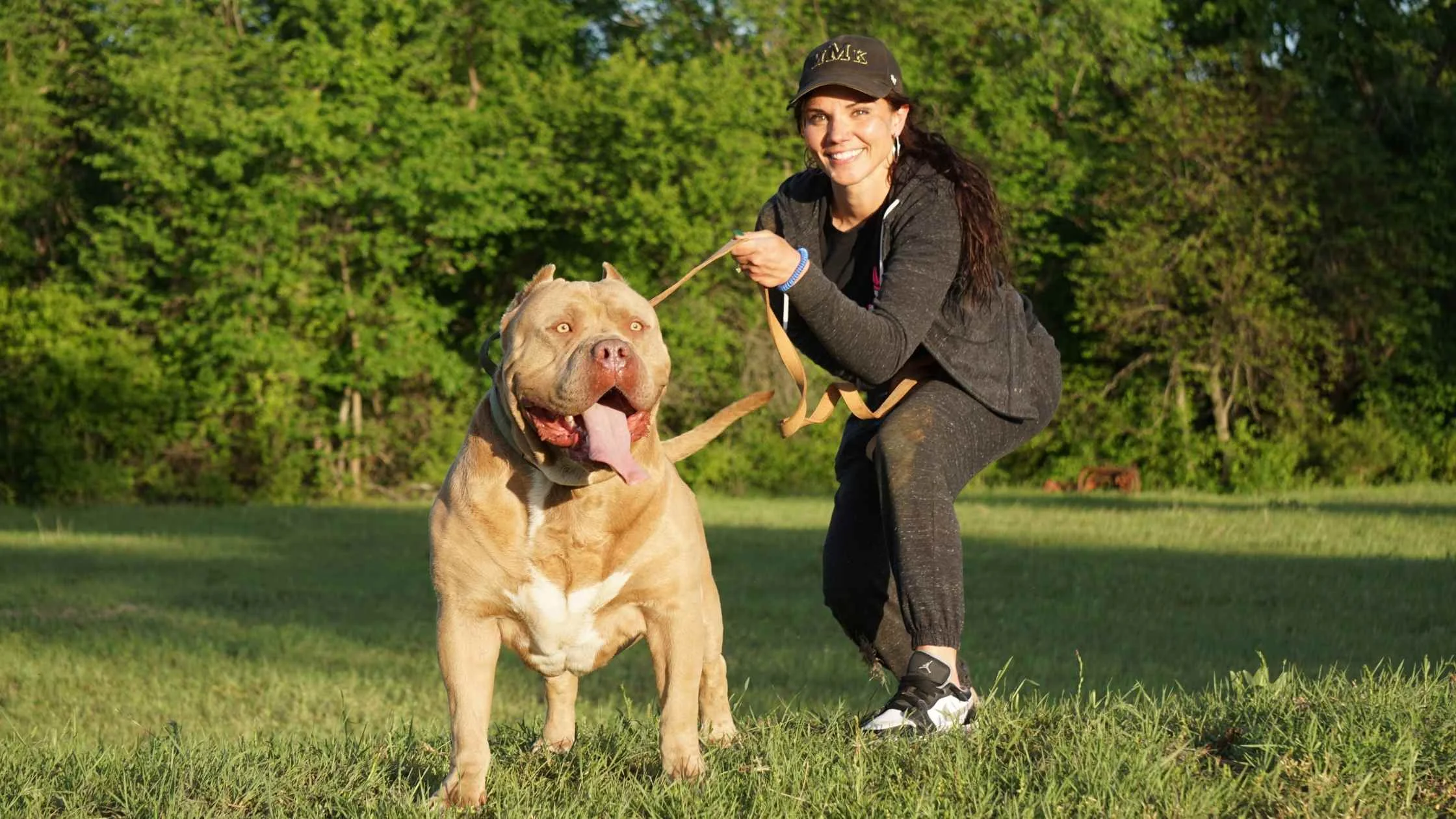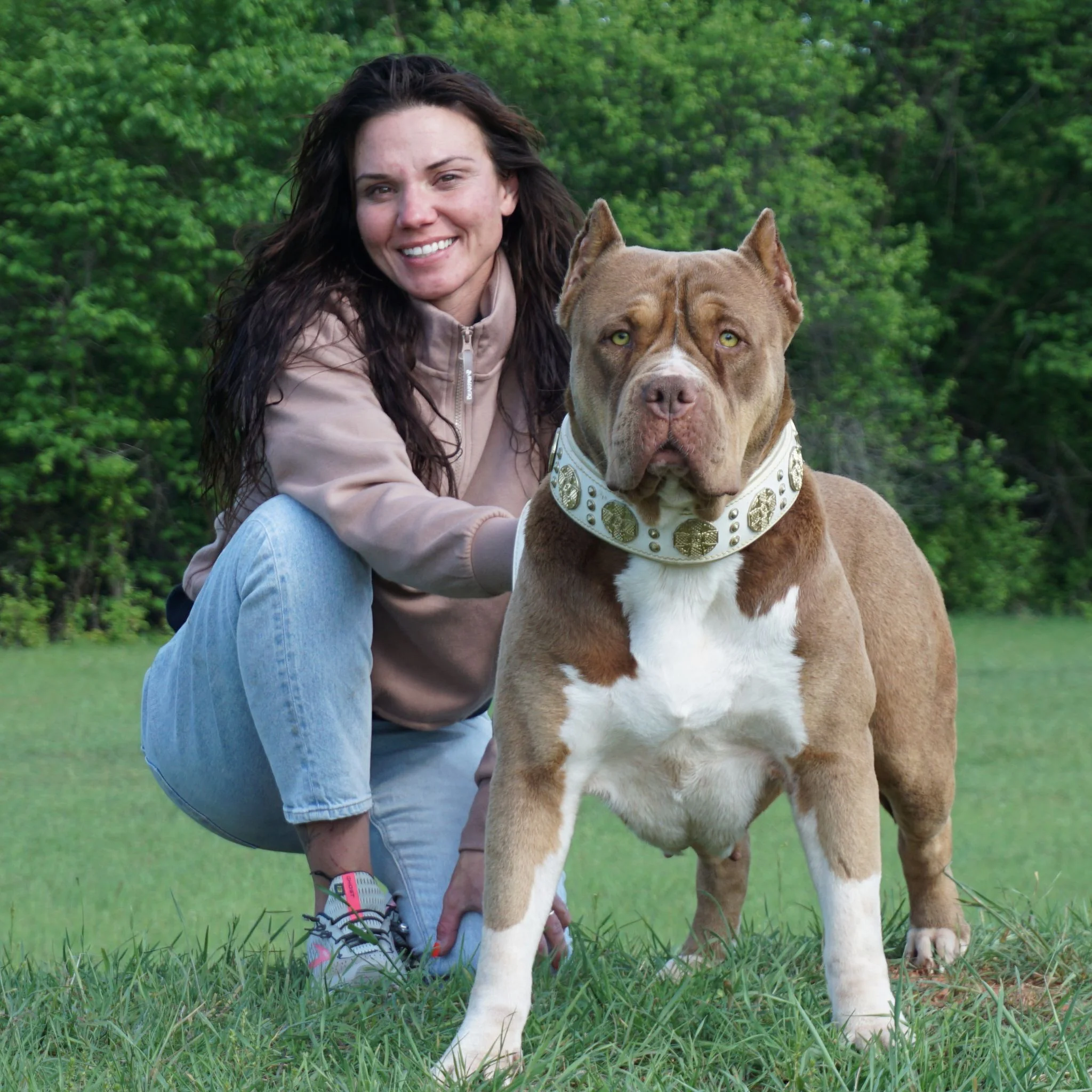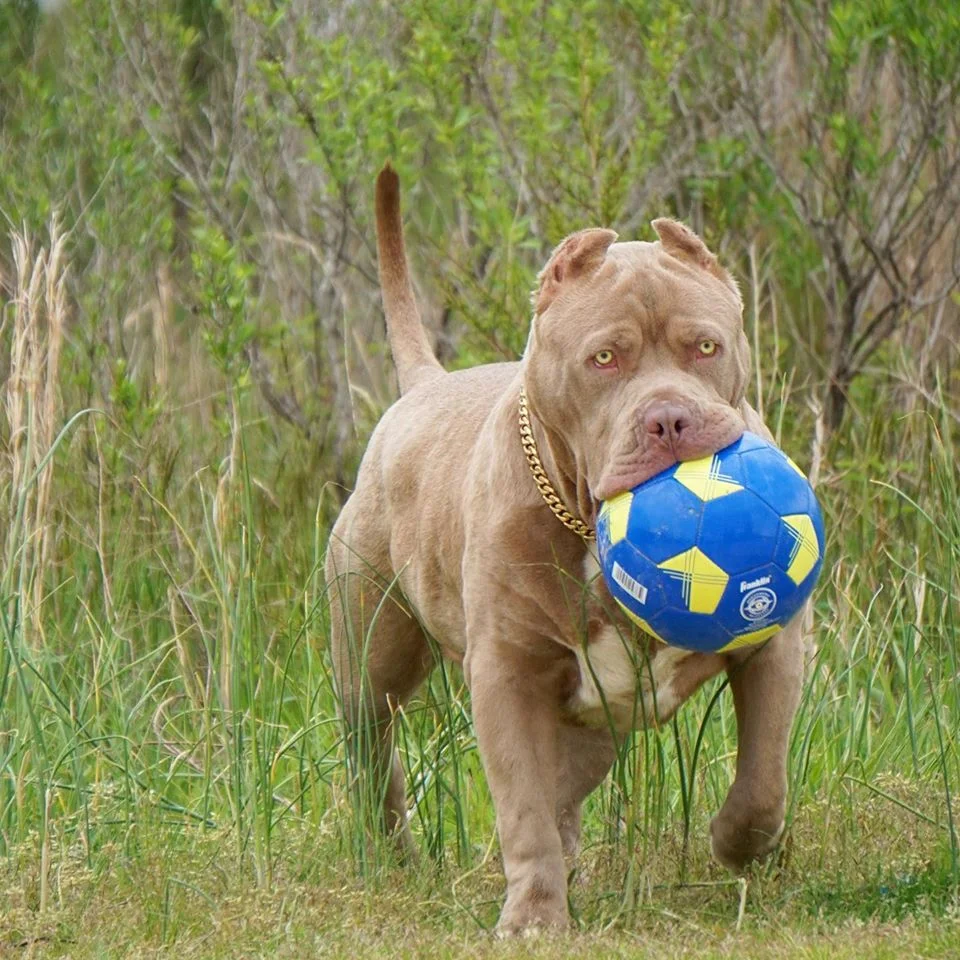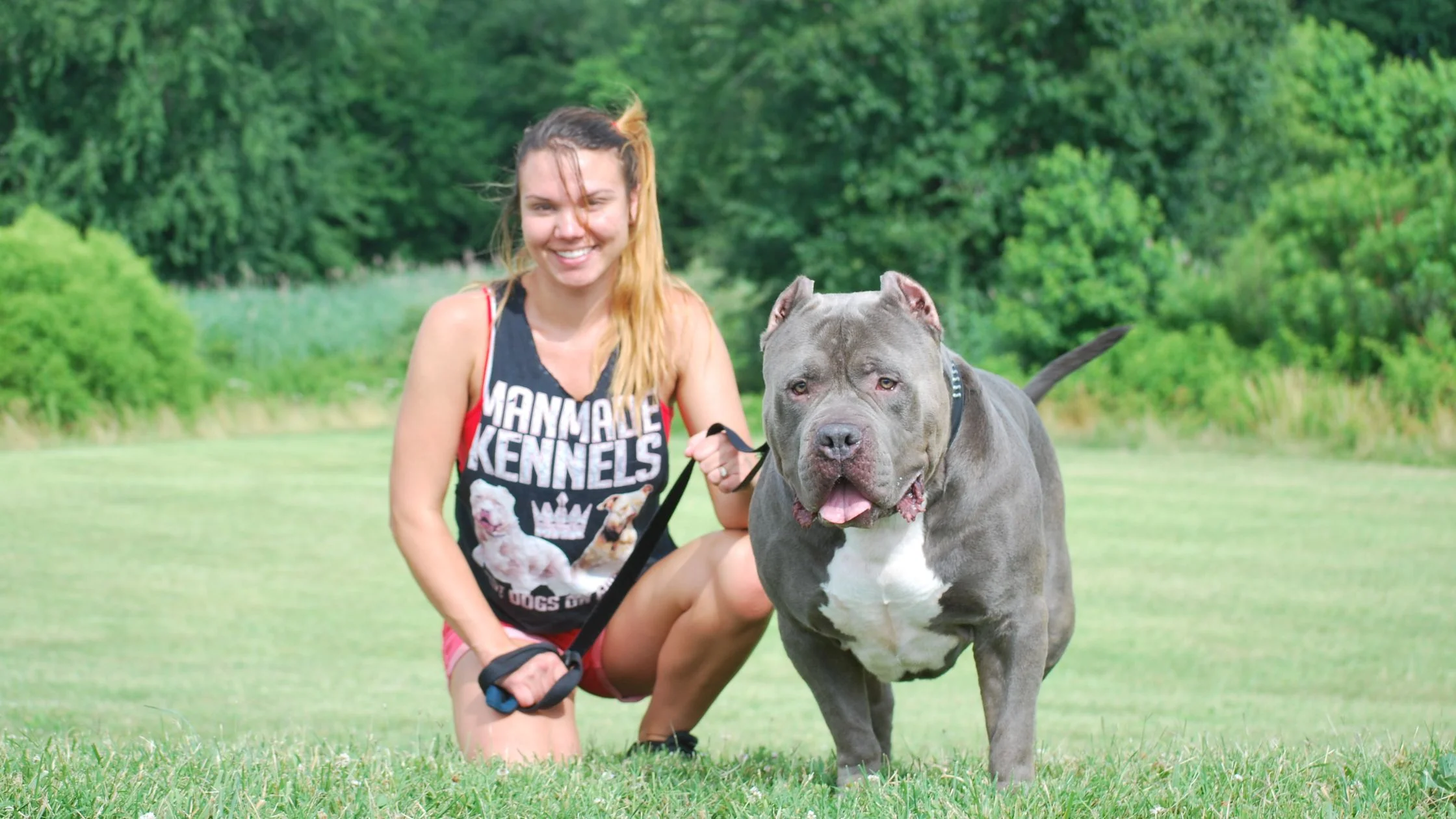Are you a proud owner of an American Bully and wondering when they will stop growing? Many Bully owners are curious about the growth process of these adorable yet strong dogs. This article will explore the commonly asked questions around American bully growth, specifically answering the question: "At what age does a Bully stop growing?"
Understanding your American Bully's growth stages is essential for their overall health and well-being. While every dog is unique, American Bullies generally reach their full height and weight by the age of 1 to 2. However, muscular development may continue until they are around 3 years old.
During the growth process, proper nutrition, exercise, and veterinary care play a significant role in maximizing your Bully's potential. It's crucial to provide a balanced diet and engage in regular physical activities to support healthy growth.
By diving into the growth patterns of American Bullies and debunking common myths, this article will equip you with the knowledge you need to better understand your Bully's growth journey. So, let's take a closer look at when your American Bully will stop growing and how to ensure they reach their full potential.
How Big Do American Bullies Get?

American Bullies are known for their muscular build, broad heads, and sturdy frames. Understanding the growth stages of these unique canines is crucial for their proper care and development. From the time they are born until they reach their full size, American Bullies go through several distinct growth phases.
Finally, the mature stage, which typically begins around 2 years of age, is when American Bullies reach their full size and weight. While their height and overall frame may not change much after this point, their muscular development can continue for up to 3 years of age, depending on the individual dog.
Understanding these growth stages is essential for providing your American Bully with the appropriate care, nutrition, and exercise throughout their development. By being aware of the changes your Bully will undergo, you can better support their overall health and well-being.
American Bully Growth: 0-3 Weeks
The first stage is the neonatal period, which lasts from birth to around 3 weeks of age. During this time, the puppies are entirely dependent on their mother's milk for nourishment and are unable to regulate their own body temperature. They spend most of their time sleeping and nursing, with minimal physical activity.
American Bully Size: 3 - 4 Weeks
As the puppies reach the transitional stage, typically between 3 to 4 weeks of age, they begin to explore their surroundings and become more independent. This is when they start to transition from their mother's milk to solid food, and their physical capabilities begin to develop.
American Bully Growth: 4 - 12 Weeks
The socialization stage, which spans from 4 to 12 weeks, is a critical period for American Bully puppies. During this time, they learn essential social skills and behaviors through interactions with their littermates, their mother, and their human caretakers. Proper socialization during this stage can have a significant impact on the puppy's future temperament and behavior.
XL Bully Growth: 3 - 6 months
The juvenile stage, which lasts from 3 to 6 months, is marked by rapid growth and development. American Bully puppies during this phase will experience a significant increase in height, weight, and muscle mass. Their bones and joints are also undergoing rapid changes, which is why it's crucial to provide them with a balanced diet and appropriate exercise to support their growth.
XL Bully Growth Size: 6 months - 2 years
The adolescent stage, spanning from 6 months to 2 years, is when American Bullies reach their full height and begin to fill out their muscular frames. During this time, their growth may slow down, but their muscle development continues to progress. It's important to monitor their exercise and nutrition closely to ensure they are developing properly.
How Do I Make My American Bully Bigger?
The growth and development of American Bully dogs are influenced by a variety of factors, including genetics, nutrition, exercise, and environmental conditions. Understanding these factors can help you ensure your Bully reaches their full potential.
Genetics play a crucial role in the growth and physical characteristics of American Bullies. The size, build, and even the rate of growth can be largely determined by the dog's genetic makeup. Responsible breeders carefully select their breeding stock to produce healthy, well-proportioned Bullies with the desired traits.
Proper nutrition is another essential factor in the growth and development of American Bullies. A balanced diet that provides the necessary nutrients, such as protein, carbohydrates, fats, vitamins, and minerals, is crucial for supporting their rapid growth and muscle development. Providing a high-quality, age-appropriate diet can help ensure your Bully grows at a healthy rate and maintains optimal body condition.
Exercise also plays a significant role in the growth and development of American Bullies. Regular physical activity helps strengthen their muscles, bones, and joints, and can also promote healthy weight management. However, it's important to strike a balance, as excessive or inappropriate exercise can be detrimental to their growth, especially during the critical developmental stages.
Environmental factors, such as access to clean water, adequate shelter, and a stress-free living environment, can also influence the growth and well-being of American Bullies. Exposure to toxins, parasites, or other health hazards can negatively impact their development and should be avoided.
Additionally, the timing and quality of veterinary care can also affect the growth and overall health of American Bullies. Regular check-ups, preventive care, and prompt treatment of any health issues can help ensure your Bully grows up strong and healthy.
By understanding the various factors that influence the growth and development of American Bullies, you can take proactive steps to support your Bully's growth and help them reach their full potential. This knowledge will not only ensure your Bully's optimal health but also provide you with the tools to make informed decisions about their care and well-being.
At What Age is an American Bully Fully Grown?
The question of when American Bully dogs stop growing is a common one among Bully owners. While there is no one-size-fits-all answer, as each dog is unique, there are general guidelines that can help you understand the growth timeline of these muscular canines.
Generally, American Bullies reach their full height and weight by the age of 1 to 2 years. During this time, they will experience a significant increase in size, with their skeletal structure and muscle mass developing rapidly. However, it's important to note that their muscular development may continue for up to 3 years of age.
During the first year of life, American Bully puppies will go through a rapid growth spurt, often doubling or even tripling in size from their birth weight. This is a crucial time to provide them with a balanced, high-quality diet and appropriate exercise to support their physical development.
As the Bully reaches their second year, their growth will start to slow down, and they will begin to fill out their muscular frame. This is when their overall body shape and proportions start to take form, and their growth may become more gradual.
While the majority of American Bullies will reach their full height and weight by the age of 2, some may continue to grow and develop until they are around 3 years old. This is particularly true for male Bullies, who tend to be larger and more muscular than their female counterparts.
It's important to remember that the growth timeline of American Bullies can vary depending on a variety of factors, including genetics, nutrition, and overall health. Some Bullies may reach their full size a little earlier or a little later than the general guidelines, and it's essential to monitor your individual dog's growth and development closely.
By understanding when American Bully dogs stop growing, you can better plan for their care and ensure they receive the proper nutrition, exercise, and veterinary attention throughout their growth process. This knowledge will help you support your Bully's healthy development and ensure they reach their full potential.
American Bully Growth: Differences Between Male and Female XL Bullies
When it comes to the growth and development of American Bullies, there are some notable differences between male and female dogs. Understanding these gender-based variations can help you better anticipate and manage the growth process of your Bully.
One of the primary differences lies in the overall size and build of male and female American Bullies. Generally, male Bullies tend to be larger and more muscular than their female counterparts. They often have a more pronounced, broad-shouldered appearance and a more substantial, stockier frame.

Female XL Bully
In contrast, female American Bullies tend to be slightly smaller and more petite in their overall build. They may reach their full height and weight a little earlier than males, often by the age of 1 to 2 years. While they may not be as large or as muscular as their male counterparts, female Bullies are still known for their powerful and well-proportioned physique.
Another notable difference between male and female American Bullies is their growth patterns. Male Bullies often experience a more pronounced growth spurt during the first year of life, with a significant increase in size and muscle mass. Females, on the other hand, may have a more gradual and steady growth process, with a less dramatic change in their physical appearance during this time.
These gender-based differences in growth and development can have implications for the care and management of American Bullies. For instance, male Bullies may require a slightly higher calorie intake and more intense exercise regimes to support their larger size and greater muscle mass. Females, on the other hand, may need a more tailored approach to their nutrition and exercise needs to ensure they maintain a healthy weight and muscle tone.
Understanding the distinctions between male and female American Bullies in terms of growth can help you provide your Bully with the most appropriate care and support throughout their development. By being aware of these differences, you can make informed decisions about your Bully's diet, exercise, and overall well-being, ensuring they reach their full potential.
Signs of a Fully Grown American Bully
Recognizing the signs of a fully grown American Bully is important for understanding your dog's development and ensuring their health and well-being. While every Bully is unique, there are some common physical characteristics that indicate a dog has reached their full size and maturity.
One of the most obvious signs of a fully grown American Bully is their overall size and build. Fully grown Bullies typically stand between 16 to 20 inches tall at the shoulder and weigh between 50 to 120 pounds, depending on their gender and build. They will have a broad, muscular chest, a wide, blocky head, and a sturdy, powerful frame.
Another key sign of a fully grown American Bully is the completion of their skeletal development. By the time they reach around 2 years of age, the bones and joints of a Bully should have fully matured, with no visible signs of growth plates or ongoing skeletal changes.
The development of their musculature is also a reliable indicator of a fully grown American Bully. While their height and overall frame may be established by the age of 2, their muscular development can continue for up to 3 years. A fully grown Bully will have a well-defined, heavily muscled appearance, with a prominent chest, shoulders, and hindquarters.
Additionally, the coat and skin of a fully grown American Bully will typically have a healthy, shiny appearance, with a smooth, even texture. Their facial features, such as the muzzle and ears, will also be fully developed and proportionate to their overall size.

Male American Bully XL
It's important to note that while these physical characteristics are generally indicative of a fully grown American Bully, individual dogs may reach their full size and maturity at slightly different ages. Regular veterinary check-ups and monitoring of your Bully's growth and development can help you determine when they have reached their adult size and proportions.
By understanding the signs of a fully grown American Bully, you can better plan for their care, nutrition, and exercise needs as they transition from adolescence to adulthood. This knowledge will help ensure your Bully's continued health and well-being throughout their lifespan.
How Do I Keep My American Bully Healthy?
Promoting healthy growth in American Bullies is essential for their overall well-being and longevity. As these dogs go through various stages of development, it's crucial to provide them with the necessary care, nutrition, and environment to support their growth and ensure they reach their full potential.
One of the most important factors in promoting healthy growth is proper nutrition. American Bullies require a balanced, high-quality diet that is tailored to their specific age and activity level. Puppy-specific formulas, which are rich in protein, calcium, and other essential nutrients, are crucial during the rapid growth stages. As the Bully matures, transitioning to an adult formula that maintains the right balance of nutrients is essential.
Regular exercise is also crucial for the healthy growth of American Bullies. While it's important to avoid excessive or inappropriate exercise during the critical developmental stages, moderate physical activity can help strengthen their muscles, bones, and joints. This includes activities like leashed walks, playtime in a secure, enclosed area, and gentle training exercises.
Providing a safe, stress-free environment for your American Bully is another key factor in promoting healthy growth. Ensuring they have access to clean water, comfortable sleeping areas, and plenty of socialization opportunities can help reduce the risk of health issues and support their overall development.
Regular veterinary check-ups are also essential for monitoring your American Bully's growth and overall health. Your veterinarian can help identify any potential growth-related issues, such as skeletal abnormalities or nutritional deficiencies, and guide how to address them.
Additionally, it's important to avoid exposing your American Bully to potential health hazards, such as toxins, parasites, or infectious diseases, as these can negatively impact their growth and development.
By following these tips and providing your American Bully with the care, nutrition, and environment they need, you can help ensure they grow up healthy, strong, and well-proportioned. This will not only contribute to their overall well-being but also help them reach their full potential as beloved companions.
Most Common Growth Related Health Issues in American Bullies

While American Bullies are generally robust and healthy dogs, they can be susceptible to certain growth-related health issues that require careful monitoring and management. Understanding these common problems can help you identify them early and take appropriate action to ensure your Bully's continued well-being.
One of the most prevalent growth-related issues in American Bullies is skeletal abnormalities, such as hip and elbow dysplasia. These conditions, which are caused by the improper development of the joints, can lead to pain, lameness, and even arthritis if left untreated. Regular veterinary check-ups and screening for these conditions are crucial, especially during the rapid growth stages.
Another common growth-related issue in American Bullies is panosteitis, also known as "growing pains." This inflammatory condition affects the long bones, causing temporary lameness and discomfort. While panosteitis is typically self-limiting, it's important to manage the pain and discomfort through appropriate veterinary care and pain management strategies.
Nutritional imbalances can also contribute to growth-related problems in American Bullies. An excess or deficiency of certain nutrients, such as calcium and phosphorus, can lead to developmental issues like osteochondrosis, a condition that affects the cartilage and bone growth. Providing a balanced, high-quality diet and following the recommended feeding guidelines is essential to prevent these issues.
Rapid growth can also put strain on the cardiovascular system, leading to conditions like dilated cardiomyopathy, a disease that affects the heart muscle. Regular veterinary check-ups, including heart screenings, can help detect and manage these issues early on.
Additionally, American Bullies may be prone to skin and coat-related problems, such as allergies or hot spots, which can be exacerbated by the stress of rapid growth. Maintaining a healthy skin and coat through proper grooming, bathing, and the use of high-quality products can help mitigate these issues.
By being aware of these common growth-related health issues and taking proactive steps to address them, you can help ensure your American Bully grows up healthy, strong, and free from unnecessary discomfort or complications. Regular veterinary check-ups, a balanced diet, and a safe, stress-free environment are all essential for promoting the optimal growth and development of these beloved canines.
How to measure the growth of an American Bully
Monitoring the growth of an American Bully is an important aspect of their care and well-being. By regularly measuring and tracking their growth, you can ensure they are developing at a healthy rate and identify any potential issues early on. Here are some tips on how to effectively measure the growth of your American Bully.
One of the most important measurements to track is the Bully's weight. Weigh your dog regularly, ideally once a week or every two weeks, using a reliable scale. Keep a record of their weight and compare it to growth charts or your veterinarian's recommendations to ensure they are gaining weight at a healthy pace.
Another crucial measurement is the Bully's height, which is typically taken at the shoulder. Use a measuring tape or a height stick to measure from the ground to the top of their shoulder. This measurement can be taken monthly or every few months to monitor their growth and ensure they are reaching their expected height range.
The Bully's chest and neck circumference are also important indicators of their overall growth and development. Use a flexible measuring tape to take these measurements, and compare them to breed standards or your veterinarian's guidance to ensure they are within a healthy range.
Additionally, you can measure the length of your American Bully from the tip of their nose to the base of their tail. This measurement can provide valuable information about their overall proportions and help identify any potential issues with their skeletal development.
It's important to note that the growth and development of American Bullies can vary greatly, and individual dogs may reach their full size and maturity at different ages. Regular veterinary check-ups, where your Bully's measurements can be compared to breed standards and growth charts, can provide valuable insights and guidance on their overall development.
By consistently measuring and tracking the growth of your American Bully, you can gain a better understanding of their development and make informed decisions about their care, nutrition, and exercise. This information can also be invaluable in identifying and addressing any potential health or growth-
I am a highly skilled content writer and SEO expert with a passion for helping small businesses succeed in the digital world. With my extensive knowledge of the latest SEO techniques and strategies, I have successfully assisted numerous clients in improving their website rankings, generating more leads, and driving a significant increase in website traffic.
As a professional content writer and SEO expert, I am confident in my ability to contribute significantly to the success of small businesses. If you are seeking a results-driven, highly skilled digital marketer who can help you increase your ranking, convert new leads, and see a substantial improvement in website traffic, I would welcome the opportunity to collaborate with you.
Website: https://manmadewebsites.com/
Email: hello@digitalmarketingchap.com

